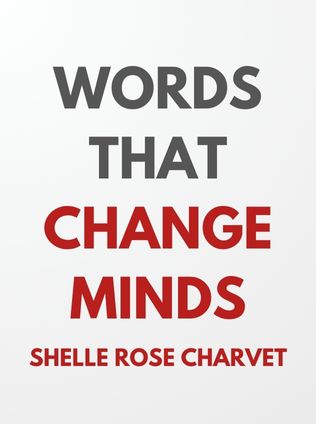
Words That Change Minds
The 14 Patterns for Mastering the Language of Influence
By Shelle Rose Charvet
Published 07/1995
About the Author
Shelle Rose Charvet is a celebrated authority in the realm of communication, known for her expertise in influencing and understanding human behavior. With a robust background in Neuro-Linguistic Programming (NLP), Charvet has dedicated her career to unraveling the complexities of human interaction and teaching others how to navigate these complexities to achieve their personal and professional goals.
As the founder of the Institute for Influence, Charvet has built a platform that offers specialized training programs aimed at improving communication skills. Her programs are particularly tailored for professionals in leadership roles, where effective communication is not just beneficial but essential. Through her extensive workshops, seminars, and now through her writings, Charvet has impacted the lives of thousands across 30 different countries, equipping them with the tools to become more influential leaders and communicators.
Her book, “Words That Change Minds”, is a culmination of her years of experience and research. It provides readers with a comprehensive guide on how to decode the mental habits of others, thereby enabling more effective and persuasive communication. The book is deeply rooted in the principles of NLP, which posits that our language and behavior are intricately linked to our mental patterns, and by understanding these patterns, we can significantly enhance our ability to influence others.
Main Idea
At the heart of “Words That Change Minds” lies the concept that every individual interprets the world through a unique set of mental filters, known as metaprograms. These metaprograms shape how we think, communicate, and make decisions. According to Charvet, understanding these mental habits is crucial for effective communication, as it allows us to align our message with the way the other person processes information.
Charvet argues that communication breakdowns often occur because people approach the same situation with completely different frames of mind. By learning to recognize and adapt to these differing mental habits, we can avoid miscommunication, reduce conflict, and build more cooperative relationships. This skill is particularly valuable in professional settings, where understanding and influencing others can lead to more productive collaborations and better outcomes.
The book outlines 14 specific metaprograms that influence how people think and communicate. These are divided into two main categories: six metaprograms that explain why people act the way they do, and eight that explain how they go about solving problems. Charvet provides a detailed analysis of each metaprogram, along with practical advice on how to identify and work with them to improve communication.
Table of Contents
- Chapter 1: Introduction to Metaprograms
- Chapter 2: The “Why” Metaprograms
- Chapter 3: The “How” Metaprograms
- Chapter 4: Applying Metaprograms in Communication
- Chapter 5: Building Better Relationships
- Chapter 6: Metaprograms in Leadership and Management
- Chapter 7: Practical Exercises for Mastering Metaprograms
Chapter 1: Introduction to Metaprograms
In the introductory chapter, Charvet lays the foundation for the concept of metaprograms. She explains that metaprograms are the mental habits or filters through which we perceive the world. These filters are formed through our experiences, beliefs, and values, and they dictate how we process information, make decisions, and interact with others.
Charvet emphasizes that while metaprograms are relatively stable, they are not fixed. This means that while a person may generally favor one metaprogram, they can shift to another depending on the context. Understanding these shifts is crucial for effective communication, as it allows us to tailor our message to the listener’s current mental state.
For example, Charvet notes that some people are primarily motivated by avoiding negative outcomes, while others are driven by the pursuit of positive goals. Recognizing this difference can help us frame our communication in a way that resonates with the other person’s motivations.
Chapter 2: The “Why” Metaprograms
The “Why” metaprograms are focused on the underlying motivations that drive people’s actions. Charvet identifies six key metaprograms in this category:
Sign up for FREE and get access to 1,400+ books summaries.
You May Also Like
The Subtle Art of Not Giving a F*ck
A Counterintuitive Approach to Living a Good Life
By Mark MansonRich Dad Poor Dad
What the Rich Teach Their Kids About Money - That the Poor and Middle Class Do Not!
By Robert T. KiyosakiHow To Win Friends and Influence People
The All-Time Classic Manual Of People Skills
By Dale CarnegieFreakonomics
A Rogue Economist Explores the Hidden Side of Everything
By Steven D. Levitt and Stephen J. Dubner



















